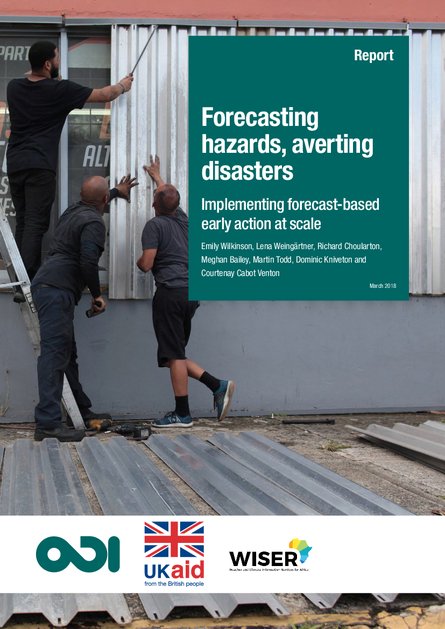
Forecast-based early action (FbA) initiatives are diverse, with very different approaches to the timing of decisions and actions, and to the types of forecast, monitoring data and delivery mechanisms used. They are also increasingly of interest to donors and humanitarian agencies as they consider how to reduce the growing humanitarian burden and reconsider how aid is spent. FbA programming uses forecasts to provide earlier support to at-risk communities before a disaster occurs, and the limited evidence on the costs and benefits of anticipatory action would seem to suggest that even a false early response is more than offset by the cost of a late response.
This paper identifies the core features of over 25 FbA instruments designed to anticipate and reduce the impacts of natural and man-made hazards. While the paper draws on evidence from a wide range of FbA initiatives over the last five years, it is not intended to provide a comprehensive review, but rather points to some of the commonalities and differences between these initiatives within what is a disparate field of practice.
The paper situates FbA innovations within broader humanitarian, disaster risk management and development agendas and reform processes. The authors examine the full chain of data use and decision-making: from decisions about the forecast and monitoring data to be assessed, to the selection of triggers and thresholds (and methods for integrating bio-physical and socio-economic impact data), protocols for action and the financing mechanisms needed to deliver support to communities before a disaster happens.
There are significant challenges associated with using forecasts systematically to trigger the release of international and national humanitarian funds – and hence taking some control over allocation away from donors, governments and NGOs – but this kind of step change is necessary if FbA is to have a significant impact on the lives of vulnerable populations.
The paper concludes by considering the potential for FbA mechanisms to be adopted at scale in humanitarian and disaster risk management decision-making through the use of different sources of risk financing and national and international delivery mechanisms.